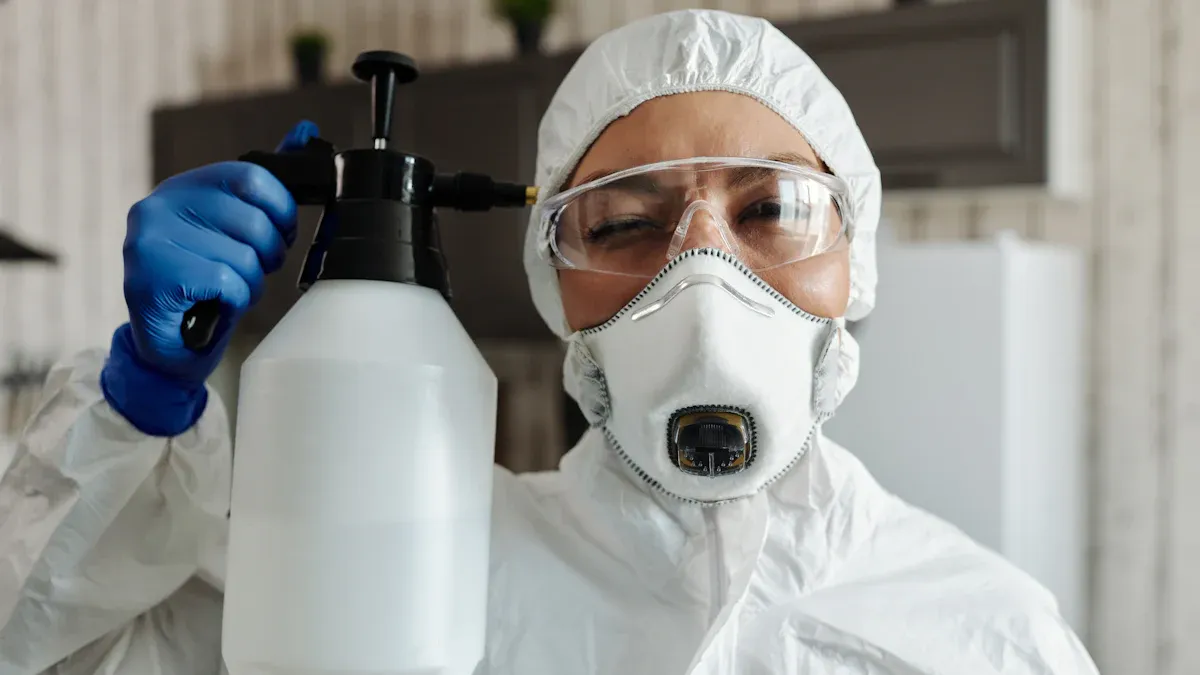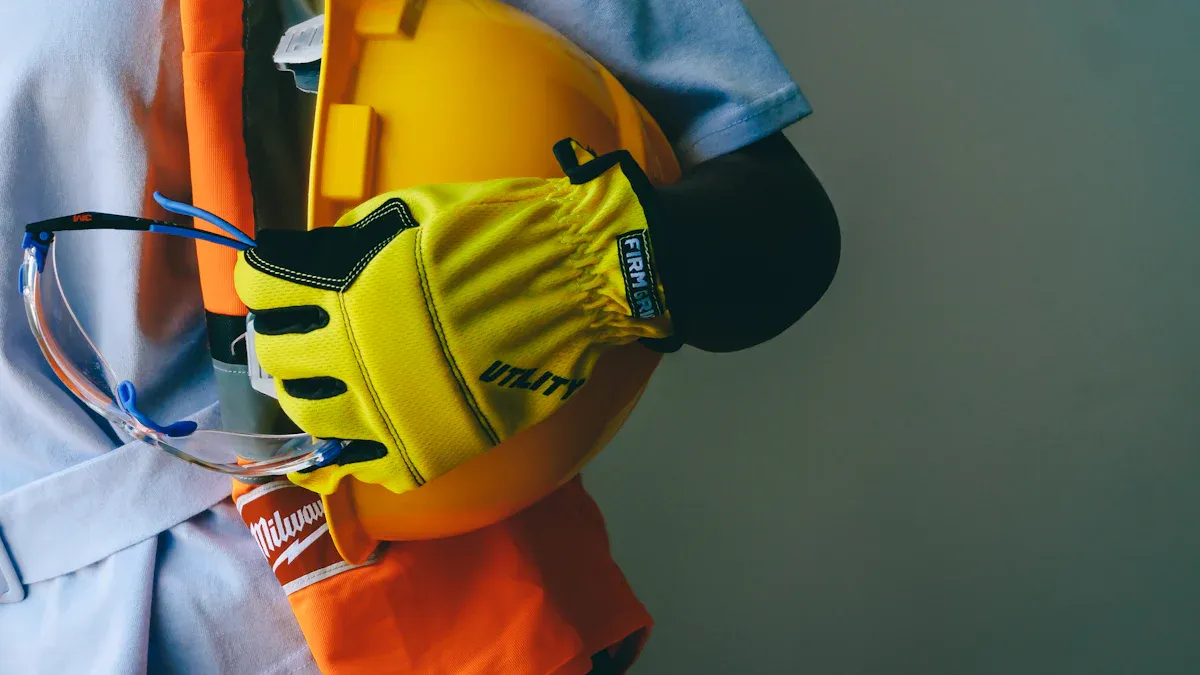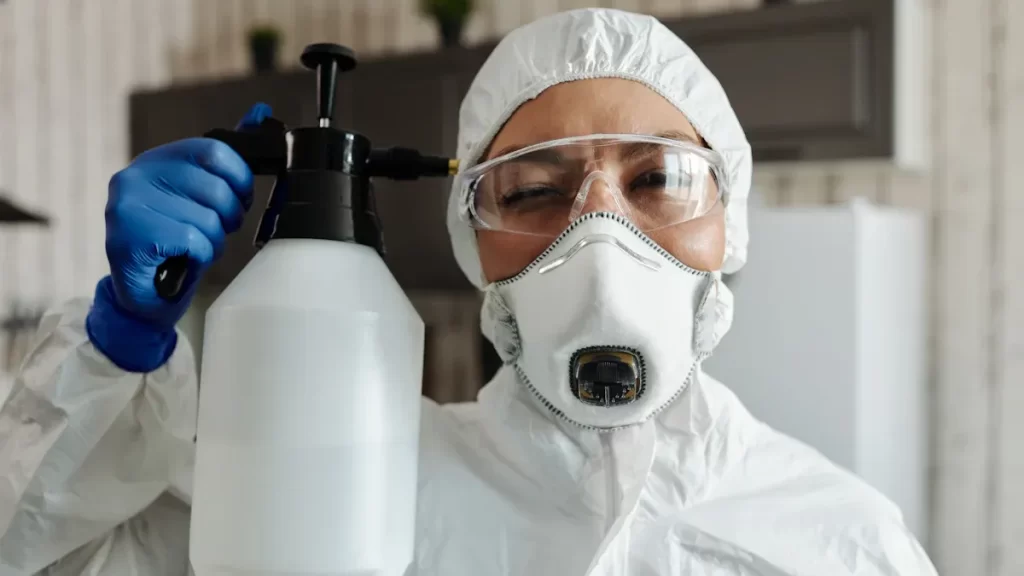News & Events
Ethanol SDS Tips That Keep You Protected

You protect yourself and others when you follow the ethanol SDS in your lab. Always start with a hazards analysis before you use ethanol. Review the safety data sheet to learn about risks and first aid. Wear the right personal protective equipment. Use a fume hood to keep flammable vapors away from fire sources. Make sure you know where emergency equipment is located. Practice your procedures and limit the amount of ethanol you use.
- Analyze hazards before handling ethanol.
- Read the ethanol SDS for safety information.
- Wear gloves, goggles, and lab coats.
- Work in a fume hood to avoid vapors.
- Know emergency equipment locations.
Safety tips help you stay confident and keep your lab safe during protein extraction and daily routines.
Key Takeaways
- Always analyze hazards before using ethanol to ensure safety.
- Read the ethanol safety data sheet (SDS) for vital information on risks and first aid.
- Wear appropriate personal protective equipment, including gloves, goggles, and lab coats.
- Use a fume hood to prevent inhalation of flammable vapors during ethanol handling.
- Label all ethanol containers clearly to avoid accidents and ensure proper handling.
Ethanol SDS Basics
When you work in a lab, you need to understand the ethanol sds before you start any experiment. The safety data sheet gives you important facts about hazards, first aid, and risk assessment. You protect yourself and others when you review these sections carefully.
Key Sections
You find several key sections in the ethanol sds. These include hazard identification, first aid measures, and risk assessment. You should read these parts every time you handle ethanol. The hazard identification section tells you about the dangers of ethanol. The first aid section explains what to do if you get exposed. The risk assessment section helps you plan safe procedures.
Hazards
You face several hazards when you use ethanol in the lab. Ethanol can cause fires, explosions, and health problems.
A researcher experienced a fire incident involving ethanol when a jar spilled on the lab bench and ignited, resulting in flames reaching up to two feet high.
You need to know the most common hazards:
- Ethanol is acutely toxic through oral, dermal, or inhalation exposure.
- Ethanol and its vapors are flammable and can travel to ignition sources, leading to flashbacks.
- Containers of ethanol may explode when heated, and vapors can create explosive mixtures in the air.
You lower your risk when you follow the safety steps in the ethanol sds.
First Aid
You must act quickly if you get exposed to ethanol. The ethanol sds lists first aid procedures for different types of exposure. You can use the table below to remember what to do:
| Exposure Type | First Aid Procedure |
|---|---|
| Eye | Irrigate immediately with large amounts of water and get medical attention right away. |
| Skin | Flush the contaminated skin with water promptly and remove clothing if necessary. Seek medical attention if irritation persists. |
| Breath | Move the person to fresh air immediately. If breathing has stopped, perform artificial respiration and seek medical attention. |
| Swallow | Get medical attention immediately if swallowed. |
You keep yourself and your team safe when you know these steps and act fast.
Ethanol Handling Safety

PPE
You protect yourself best when you choose the right personal protective equipment for handling ethanol. The table below shows the most effective PPE for laboratory work:
| PPE Type | Description |
|---|---|
| Chemical-splash goggles | Indirectly vented goggles that meet ANSI/ISEA Z87.1 D3 standards shield your eyes from splashes. |
| Chemical-resistant gloves | Nitrile gloves resist ethanol and do not limit your dexterity. |
| Lab coats or chemical aprons | Protective clothing covers your skin and reduces exposure to hazardous chemicals. |
| Safety glasses | Wear these at all times to guard against unexpected splashes. |
Tip: Always inspect your gloves for tears before you start working. Replace damaged PPE right away.
Preventing Aerosols
You lower the risk of inhaling ethanol by preventing aerosol formation. Follow these steps to keep your lab air safe:
- Use a certified biological safety cabinet (class I or II) when working with risky agents.
- Inspect centrifuges often to catch leaks early.
- Let aerosols settle for five minutes before opening blenders.
- Use mechanical pipetting devices instead of mouth pipetting.
- Minimize air bubbles when you fill syringes.
Note: Good ventilation helps remove vapors. Use a fume hood to capture ethanol and keep flammable concentrations away from ignition sources.
Spill Response
You must act quickly and safely if ethanol spills in your lab. Follow these steps:
- Notify your colleagues and the lab director about the spill.
- Evaluate the risks to decide if the spill is simple or complex.
- Put on the correct PPE before cleaning up.
- For simple spills, contact your environmental health and safety office for advice.
- For spills larger than 500 mL or those that pose a big risk, call Public Safety and emergency responders.
You need protective clothing, evacuation plans, fire suppression equipment, and disposal containers for cleanup. Only clean up spills if you have the right materials and know the chemical properties.
Static Discharge
You prevent fires by controlling static electricity during ethanol transfer. Take these steps:
- Ground and bond all containers, pumps, and pipes.
- Use proper ventilation to stop vapor buildup.
- Install sensors to monitor ethanol vapor levels.
- Add flame arrestors to vent lines.
Remember: Static discharge can ignite ethanol. Always follow the safety steps in the ethanol sds to reduce fire hazards.
Ethanol Storage

Containers
You need to choose the right containers for storing ethanol in your lab. The table below shows which types work best and which ones you should avoid:
| Container Type | Description |
|---|---|
| HDPE | Approved for flammable liquids, tight-sealing caps to prevent vapor leaks. |
| Stainless Steel | Non-reactive and durable, suitable for ethanol storage. |
| Glass | Non-reactive, ideal for safe storage of ethanol. |
| PTFE/Teflon® | Good alternative for certain applications. |
| Polypropylene (PP) | Suitable for ethanol storage. |
| Nylon | Another good option for storing ethanol. |
| Brass | Avoid due to risk of lead leaching. |
| Untreated Aluminum | Not recommended for long-term storage. |
| Steel Drums | Commonly used for safe storage and shipping. |
| IBCs | Intermediate bulk containers for larger volumes. |
| DOT-rated Tanks | Designed for safe transport and storage of hazardous materials. |
You should always use containers with tight-sealing caps. This prevents vapor leaks and keeps ethanol pure. Avoid brass and untreated aluminum because they can cause contamination.
Ventilation
You keep your lab safe when you store ethanol in a dry, cool, and well-ventilated area. Good ventilation removes flammable vapors and lowers the risk of fire. You should never store ethanol near heat sources or direct sunlight. Fire-rated buildings offer extra protection. If you store ethanol within 10 feet of an occupied building, use a 4-hour fire-rated building. For storage 10 to 30 feet away, a 2-hour fire-rated building is required. Buildings more than 30 feet away do not need fire ratings. You must follow these rules to meet safety standards and prevent accidents.
Tip: Install fire suppression systems and conduct regular fire risk assessments to keep your storage area safe.
Labeling
You reduce the risk of accidents when you label every ethanol container clearly. Each label must show the chemical name, hazards, and emergency procedures. This helps everyone in the lab know what is inside and how to handle it safely. Proper labeling prevents mix-ups and supports quick emergency responses. You protect yourself and your team by making sure all containers have up-to-date labels.
Remember: Improper storage can lead to fires, explosions, and legal problems. Always follow storage guidelines to keep your lab safe and compliant.
Western Blotting Safety
Ethanol Use in Western
You use ethanol in western blotting to wash membranes and prepare solutions. Ethanol helps remove unwanted substances from your samples. You must follow the ethanol sds before you start any protocol. Ethanol is flammable and can harm your health if you breathe in vapors or touch your skin. You lower risks by working in a fume hood and wearing gloves, goggles, and a lab coat.
You need to measure ethanol carefully for each protocol. You keep containers closed when not in use. You avoid open flames and heat sources near your workspace. You check labels on all bottles before you add ethanol to your blotting protocol. You store ethanol away from incompatible chemicals. You keep your workspace clean to prevent spills and accidents.
Tip: Always review the ethanol sds before you begin a new protocol. This helps you stay safe and avoid mistakes.
Protein Extraction
You use ethanol during protein extraction in western blotting to purify proteins and remove contaminants. Ethanol helps you separate proteins from other cell parts. You must handle ethanol with care because it can affect your samples and your health.
Ethanol exposure can reduce the viability of human cells. Studies show that high concentrations of ethanol lower the levels of tight junction proteins like claudin-5, occludin, and ZO-1. These proteins help keep your samples intact during protein extraction. If you lose these proteins, your results from western blotting may not be reliable. You need to use the right concentration of ethanol for each protocol. You avoid long exposure times to protect your proteins.
You follow each protocol step by step. You use clean tools and containers for protein extraction. You keep samples cold to protect proteins from breaking down. You label all tubes and bottles with the correct information. You record every step in your lab notebook. You check your results after blotting to make sure your proteins are intact.
Note: If you see changes in your protein bands after blotting, review your protocol and ethanol handling steps. This helps you find and fix problems with protein extraction.
Disposal
You must dispose of ethanol waste from western blotting according to local and national regulations. Ethanol is hazardous and needs special handling. You collect all waste in approved containers. You label each container with the contents and hazards. You never pour ethanol down the drain or throw it in the trash.
You follow your lab’s protocol for hazardous waste disposal. You contact Environmental Health and Safety (EHS) for help with disposal. EHS handles all solutions from blotting, including those with ethanol, DMSO, and methanol. You keep records of all waste you generate during protein extraction and blotting.
- You follow local and national rules for ethanol disposal.
- You treat ethanol as hazardous waste and use special protocols.
- You avoid penalties and safety hazards by following regulations.
- You use EHS services for all ethanol waste from western blotting.
⚠️ Always check your lab’s protocol and the ethanol sds before you dispose of any waste. Proper disposal keeps you safe and protects the environment.
Safety Checklist
Daily Reminders
You keep your lab safe when you follow a daily checklist. This routine helps you protect yourself, your samples, and your results. Use the table below to guide your safety steps each day:
| Item | Description |
|---|---|
| PPE | Wear chemical-splash goggles, a lab coat or apron, and non-latex gloves before handling ethanol. |
| Hazard Assessment | Check for risks before you start any experiment, especially when working with antibody solutions. |
| Emergency Procedures | Know where to find fire extinguishers, eyewash stations, and spill kits. |
| Fume Hood | Always use a fume hood when you handle ethanol or prepare antibody dilutions. |
| Ignition Sources | Remove all flames and heat sources from your workspace. |
| Quantity Restriction | Only use the amount of ethanol you need for your antibody protocols. |
| Training | Make sure you and your team review emergency steps every year. |
Tip: Review this checklist before you begin any work with antibodies or antibody-based experiments.
Emergency Contacts
You need quick access to emergency contacts when you work with ethanol and antibodies. Keep this list posted in your lab:
| Emergency Service | Phone Number | Availability |
|---|---|---|
| 911 (Emergency Services) | 911 | Immediate |
| American Association of Poison Control Centers | 1-800-222-1222 | 24/7 |
| CHEMTREC | 1-800-424-9300 | 24/7 |
| National Response Center (USCG) | 1-800-424-8802 | 24/7 |
| INFOTRAC | 1-800-535-5053 | 24/7 |
📞 Post these numbers near your phone. You save time and protect your antibody samples during emergencies.
SDS Review
You stay prepared by reviewing the ethanol SDS often. Update your knowledge every time you change an antibody protocol or start a new experiment. The SDS gives you the latest safety information for handling ethanol with antibodies. Share updates with your team and keep a printed copy in your lab. You lower risks and improve your results when you make SDS review a habit.
Note: Regular SDS reviews help you spot changes in safety rules for antibody work and keep your lab compliant.
You keep your lab safe when you follow key ethanol SDS tips every day. Always check the SDS before you use ethanol. Reinforce safety practices with your team and review them regularly.
- Review the SDS before each use.
- Reinforce safety steps every time you work with ethanol.
- Wear gloves, goggles, and a lab coat.
- Store ethanol in sealed, corrosion-resistant containers.
- Keep ethanol away from heat and flames.
- Use a fume hood for mixing and handling.
- Clean up spills safely and dispose of waste properly.
Stay alert and make safety your routine. You protect yourself and others when you follow these steps. Keep your lab compliant and safe by reviewing procedures often. 🧪
FAQ
What is the role of ethanol in immunoblotting and sds-page gel electrophoresis?
You use ethanol to wash the membrane after sds-page gel electrophoresis. Ethanol helps remove unwanted substances from the membrane. This step improves detection of protein bands. Ethanol also prepares the membrane for immunodetection of proteins. You follow the immunoblotting protocol for best results.
How do you ensure accurate detection of protein on the membrane?
You must block the membrane to prevent non-specific binding. Use a blocking buffer before adding antibodies. This step improves detection and immunodetection. Always wash the membrane after each step. You keep the membrane moist to protect protein signals. Good technique gives you clear detection.
Why is the membrane important for immunodetection of proteins?
The membrane holds the protein after transfer from sodium dodecyl sulfate polyacrylamide gels. You use the membrane for immunodetection. The membrane allows antibodies to bind to the protein. This process helps you see the protein bands. The membrane supports detection and immunodetection steps.
What safety steps should you follow when handling protein samples for detection?
You wear gloves and goggles to protect yourself. Always use a fume hood when working with ethanol. Label all containers. Keep the membrane clean to avoid contamination. Dispose of waste properly. These steps protect you and your protein samples during detection and immunodetection.
How do you improve immunodetection results on the membrane?
You use fresh reagents and follow the immunoblotting protocol. Keep the membrane wet during detection. Use proper antibody dilutions. Wash the membrane well after each step. Record all steps in your lab notebook. These actions help you get strong detection signals for your protein.

